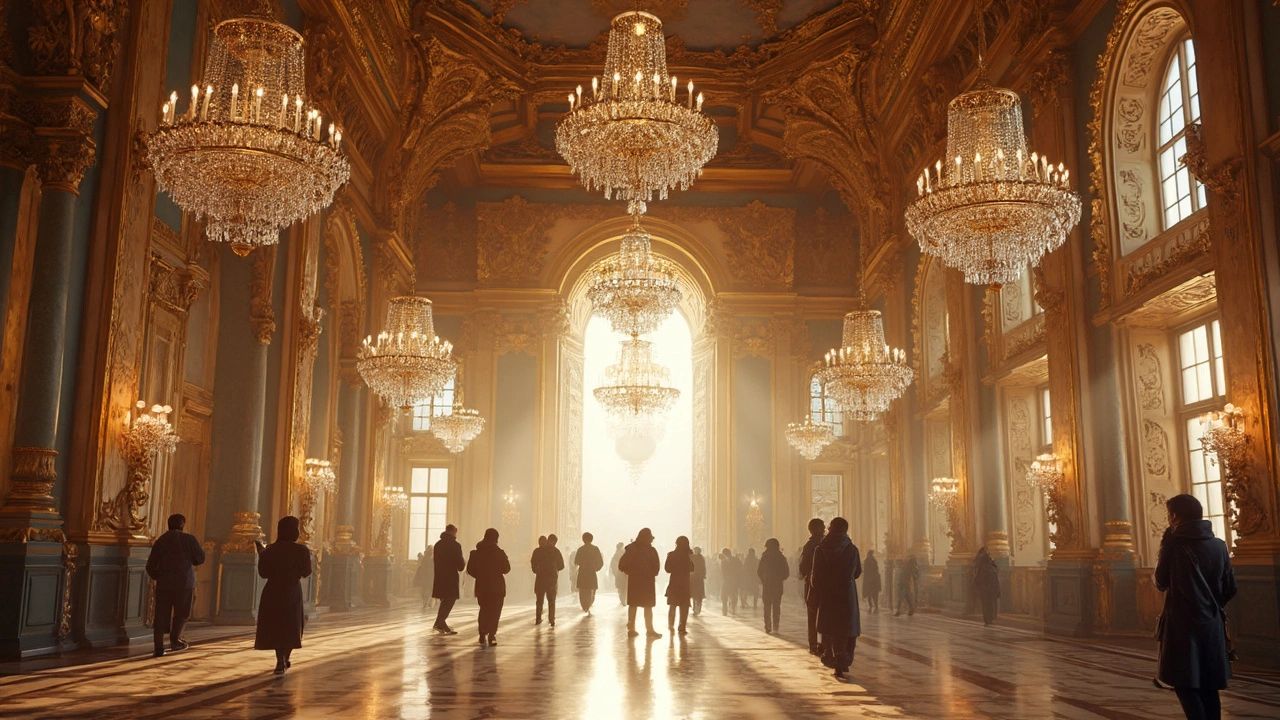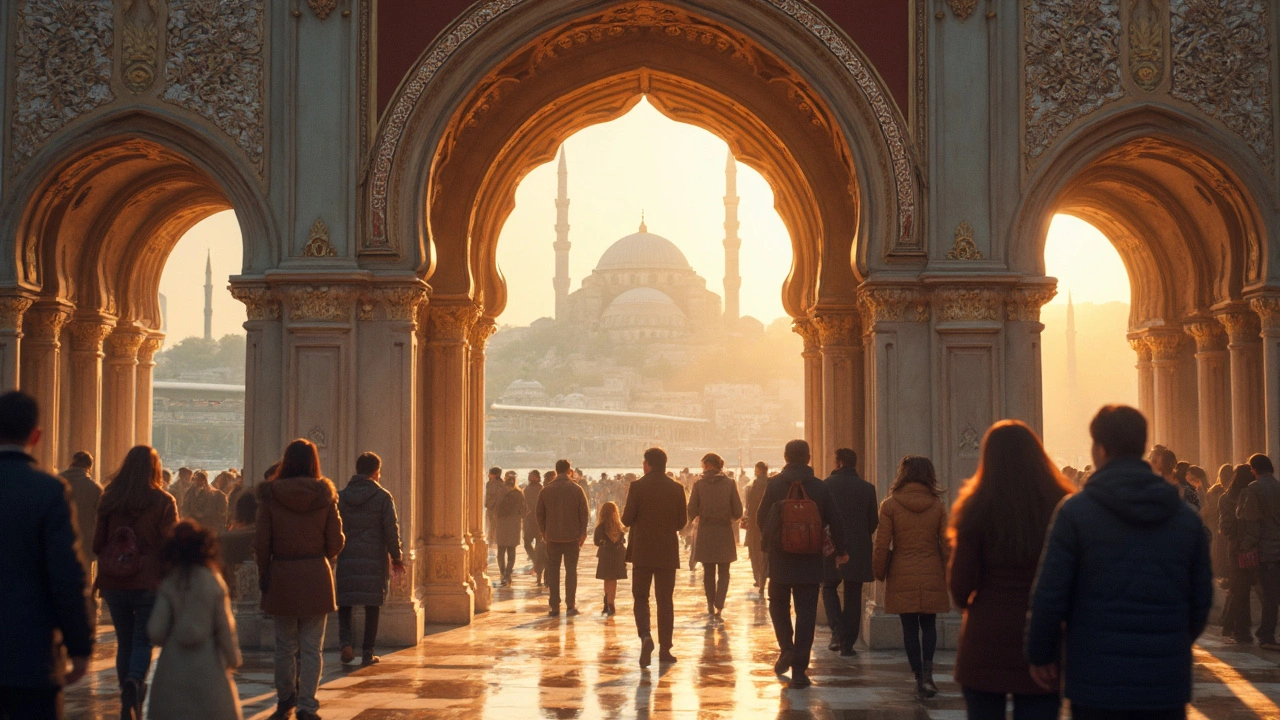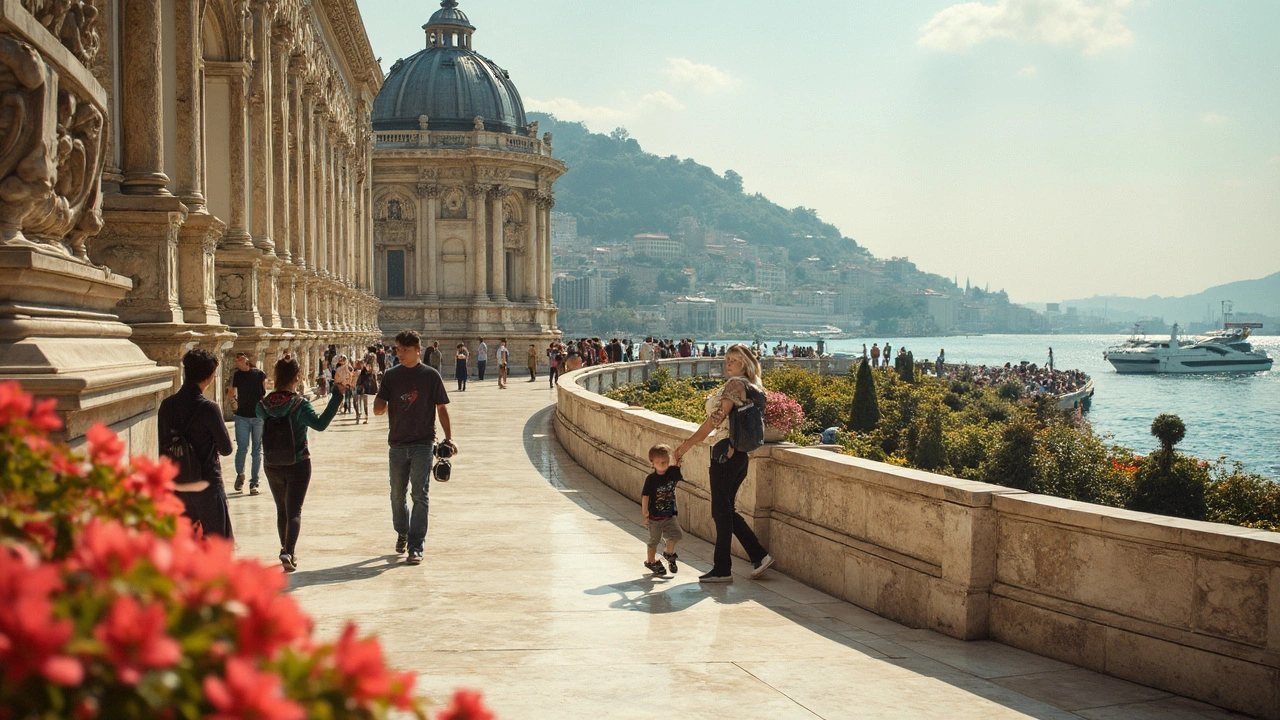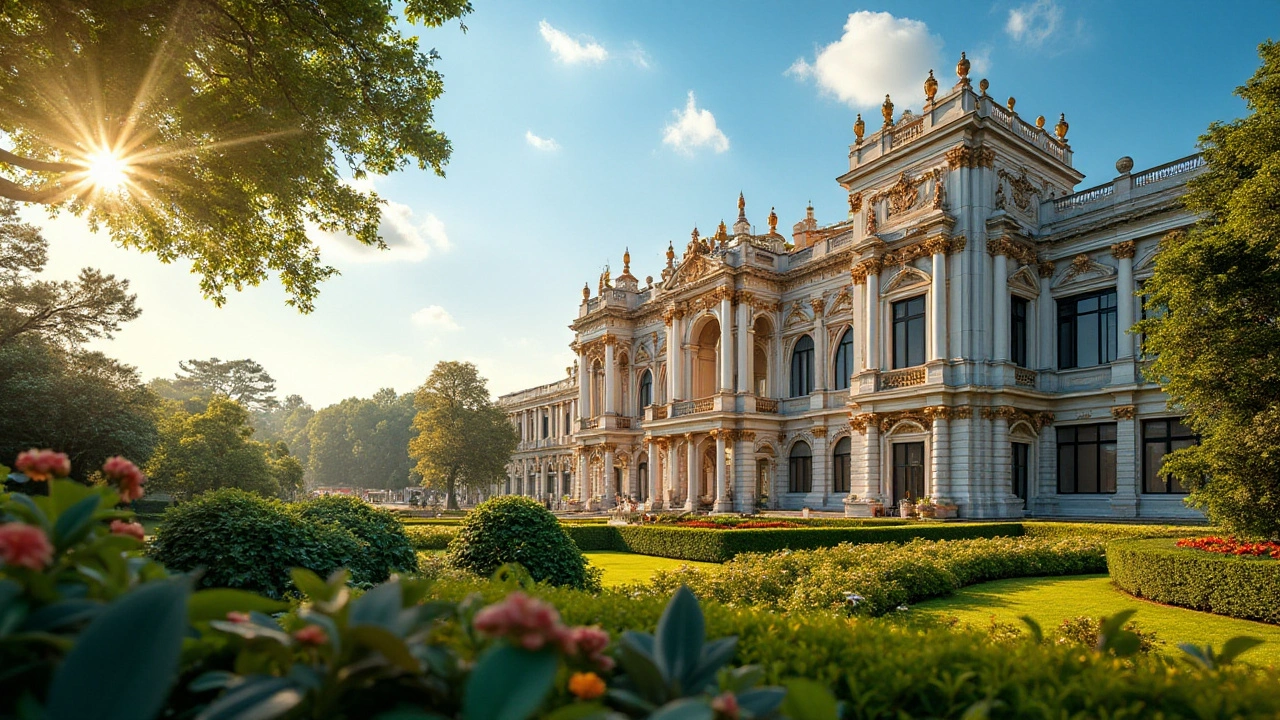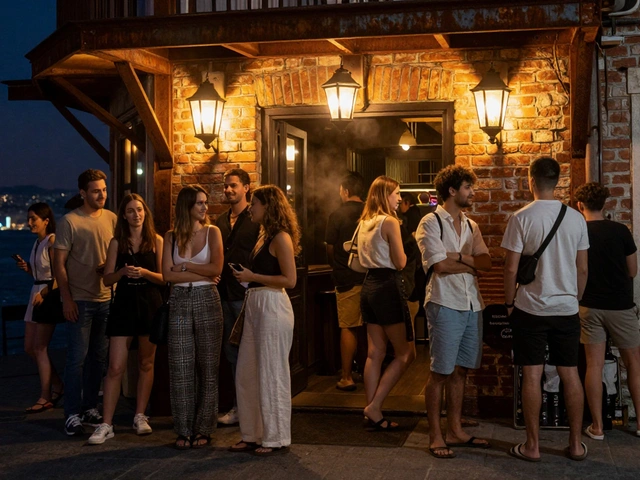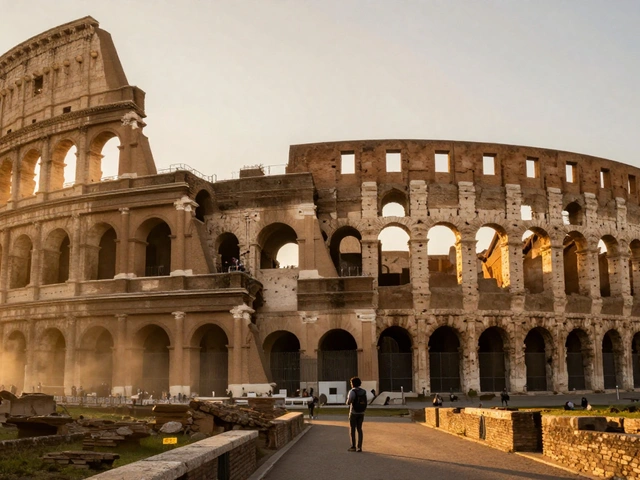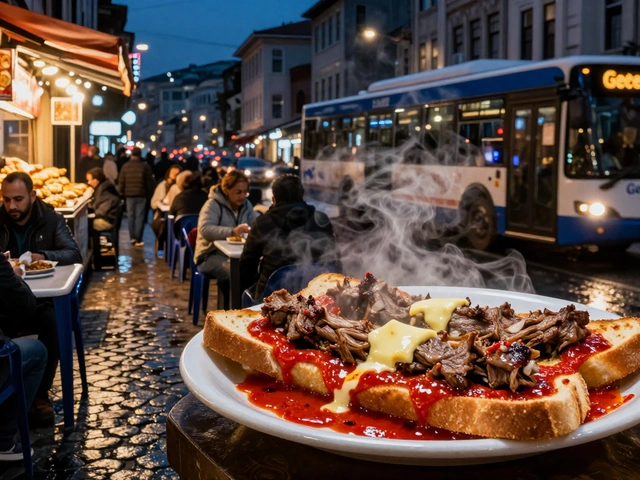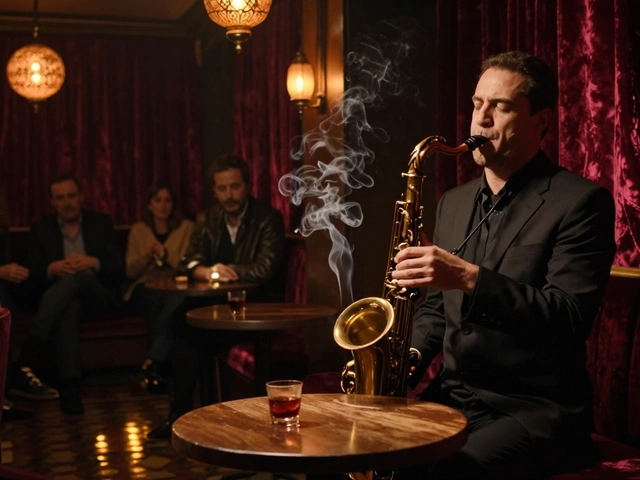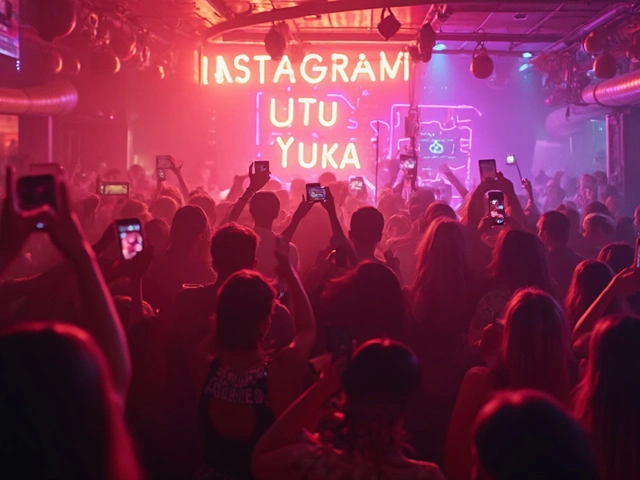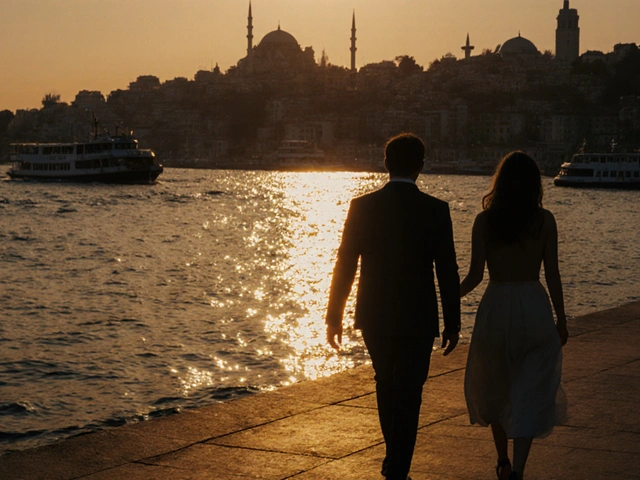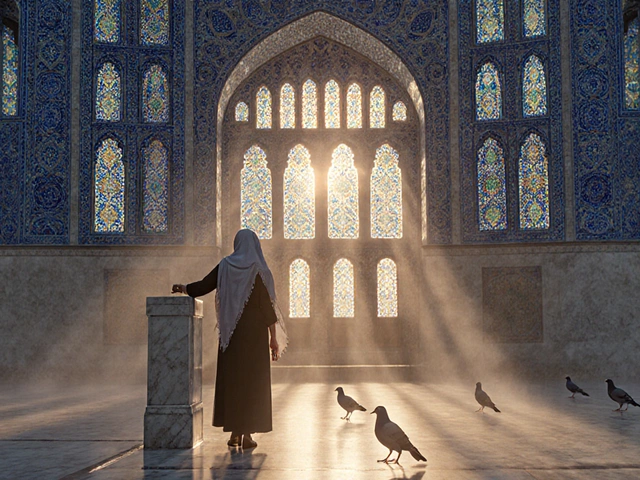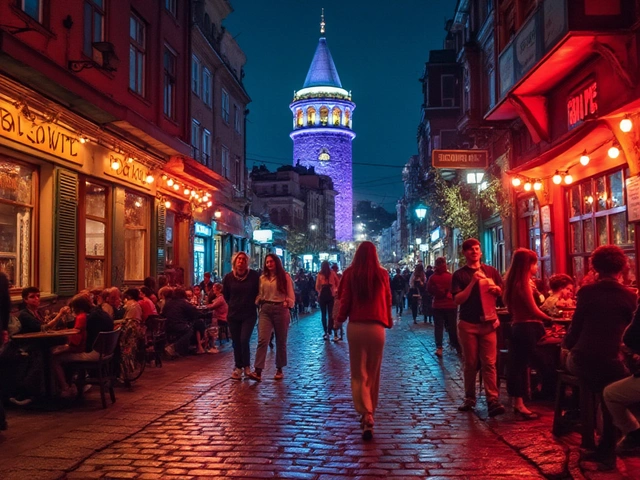Everyone who’s spent time in Istanbul has a Dolmabahçe story—maybe it’s snapping photos in the grand Crystal Staircase, maybe it’s getting lost in yet another chandelier-filled room. This isn’t some dusty old relic: Dolmabahçe Palace is where Ottoman sultans switched from tradition to Western-style living, and you feel that shift in every corner. Not just a stop for cruise-ship crowds, the palace is woven into the city’s rhythm—ask anyone who’s crossed Beşiktaş square on a Sunday morning or tried to grab a quick simit outside its gates.
If you’re living in Istanbul or even just passing through for business, this palace is hard to ignore. Locals actually do visit—especially during special events, Ramadan nights, or when showing off the city to out-of-towners. Even people from Kadıköy make the trek across the Bosphorus for the showy architecture and sweeping views of the Sea of Marmara. And let’s be real: it’s the only palace in Istanbul where you’ll spot a crystal chandelier bigger than your apartment hanging just above Atatürk’s deathbed. Whether you’re into history, Instagram-worthy shots, or just need a cool place to escape the summer heat, Dolmabahçe checks off every box.
- Why Dolmabahçe Feels Unlike Any Other Palace in Istanbul
- The Can’t-Miss Highlights and Local Secrets
- Navigating Tickets, Queues, and Timing
- Shopping, Cafés, and What’s Nearby
Why Dolmabahçe Feels Unlike Any Other Palace in Istanbul
Dolmabahçe isn't your standard Ottoman relic—walk through its gates, and you’ll see a place that flips the script not just on palaces in Istanbul, but on Turkish history overall. Unlike Topkapı, which feels all winding courtyards and shadowy chambers, Dolmabahçe opens up with bold European-inspired halls, massive ballrooms, and sunlight streaming off crystal chandeliers. This shift wasn’t an accident. Sultan Abdülmecid built the palace in the mid-1800s because he wanted fancy Western touches. That’s why you’ll spot imported Italian marble, French clocks, and even a British crystal staircase—nothing feels old-school Istanbul here.
The palace’s location is another curveball. Instead of being buried inside the old city walls, Dolmabahçe sits on prime waterfront property along the Bosphorus in Beşiktaş. Locals know it’s the only palace in town where you can stand on the marble quay and feel sea spray while looking out toward Üsküdar and Kadıköy. That waterfront vibe makes the palace feel alive—there’s the TURYOL ferry docking right next door, and you’ll always spot Istanbulites jogging past or grabbing a tea on the palace-facing benches in Dolmabahçe Park.
What really sets Dolmabahçe apart are the gigantic shared spaces. The Ceremonial Hall is honestly jaw-dropping, with its 4.5-ton chandelier (yes, the biggest Bohemian crystal chandelier in the world). And get this: the palace had electricity and a central heating system before most people in Istanbul did—even before most major European palaces caught up. Add in features like the Sultan’s Harem, lavishly decorated family rooms, and the famous room where Mustafa Kemal Atatürk spent his last days, and you see why visitors say no other palace in the city matches Dolmabahçe’s mix of Ottoman and modern European vibes.
The Can’t-Miss Highlights and Local Secrets
First thing—don’t rush past the Dolmabahçe Clock Tower outside. It’s a solid meeting point, especially if you’re linking up with friends using Istanbulkart or a BiTaksi ride. Once inside, take a look at the crystal staircase. Those banisters actually are made of Baccarat crystal, and they’ve held up for over 150 years through Istanbul’s humidity and countless Instagram sessions.
The real star, though, is the Dolmabahçe Palace Ceremonial Hall. The place feels almost unreal with its massive columns and a chandelier weighing over four tons. Yes, it’s the biggest Bohemian crystal chandelier in the world—gifted by Queen Victoria herself. It makes Topkapı’s treasures look low-key by comparison. Pro tip: if you time your visit on a sunny afternoon, the light bouncing off all that crystal and gold is wild for photos, and you won’t even need a filter.
Don’t skip Atatürk’s room, where he spent his last days. Turkish people leave carnations here, and it’s not just a tourist thing—it’s a part of local history. You’ll see his old clock set forever at 9:05, the time he died. It hits different when you’re in the room, especially if you’ve grown up hearing about Atatürk since primary school.
If you’re the type who loves to geek out on details, try to spot the original Hereke carpets on the floors. Locals know how pricey those are—one of those in your living room and you’d skip rent for a year. And check the ceilings—they’re painted, not plastered, which is a classic Ottoman move but with a European twist. Sometimes, the security will quietly point out hidden sultans’ signatures if you ask nicely (and speak a little Turkish—it pays off here).
- The harem section isn’t just filler: you’ll get a window into the private lives of the last Ottoman royals.
- Head to the seaside gardens if you want a breather. During spring, tulips are everywhere—this is Istanbul, after all.
- Pace yourself. Dolmabahçe is bigger inside than it looks: wear comfy shoes and bring a bottle of water (no big bags allowed, but tiny backpacks are fine).
- If you’re with kids, grab a family audio guide—they make stories about Sultans actually interesting for little ones.

Navigating Tickets, Queues, and Timing
Let’s be honest, nobody likes waiting in a never-ending line—especially under the Beşiktaş sun. Visiting Dolmabahçe Palace can be a breeze or a bit of a headache depending on how you time things. Tickets aren’t exactly cheap: as of May 2025, here’s the breakdown of official prices (with a handy comparison in Turkish Lira):
| Ticket Type | Price (TL) | What’s included |
|---|---|---|
| Main Palace + Harem | 1050 | Everything inside, both sections |
| Main Palace Only | 650 | The massive state rooms |
| Harem Only | 500 | Private family quarters |
| Children under 7 | Free | Tag along with an adult |
The Istanbul Museum Pass doesn’t work here. Yes, really. If you want to save time, skip the ticket counter and head to the official website (millisaraylar.gov.tr) to book your ticket in advance. Mobile tickets get you straight to security, and sometimes that means shaving a solid 40 minutes off your wait during busy weekends or school holidays.
Entrance can feel tight right at opening (9:00 AM) and post-lunch. Locals will tell you: go late morning on a weekday. Saturdays get crowded, especially after noon when big tour buses show up at Kabataş. You can check real-time foot traffic on the palace’s social media—yes, they’re that up-to-date. Dolmabahçe closes at 5:30 PM, last entry is 4:00 PM sharp—guards do not budge, even for that teary-eyed tourist who just missed the cut-off.
- Bags go through airport-style security. Keep water bottles, big cameras, or snacks to a minimum if you want to speed through.
- If you’re with a stroller or wheelchair, tell staff outside—they know the back routes for easier access.
- Keep your ticket handy—even after you’re inside. It’ll get scanned for different sections.
Ibrahim Kavak, curator at the National Palaces Administration, says it best in a recent interview:
“The best visits happen when guests plan for weekdays and buy their tickets online. Our busiest hours are still popular for a reason, but there’s nothing like having the Ceremonial Hall almost to yourself if you arrive early enough.”
Short on time? See if tickets are still available for combos with a guided tour. Local agencies sometimes have late availability even when the palace’s main site shows ‘sold out’—you’ll spot their stands right outside Dolmabahçe or over at Beşiktaş ferry terminal.
Shopping, Cafés, and What’s Nearby
Step outside Dolmabahçe Palace and you’re surrounded by the kind of local flavor that keeps Istanbulites hanging around even after a palace tour. There’s a small official gift shop at the palace exit where you’ll find classic souvenirs—think Turkish tiles, magnets shaped like the palace, and glossy coffee table books. Prices here are pretty standard for a tourist spot, so if you want something unique or cheaper, save your lira for the Beşiktaş market area a five-minute walk north. That’s where locals hit up family-run bookstores, quirky antique shops, and stands selling handmade jewelry.
When it’s time for a food break, skip the palace café unless you’re desperate—it’s fine, but there are better options a few steps away. Walk along the coastal road and you’ll bump into the always-packed Sütiş, which draws crowds for its silky rice pudding (fırın sütlaç) and Turkish breakfast spreads. Or try the humble, sausage-heavy sandwiches and ayran at Tostçu Mahmut just up the hill, a favorite fix for students from nearby Galatasaray University.
People watching is top-notch in the neighborhood. You can grab a bench at Dolmabahçe Parkı and take in the view of the Bosphorus ferries zipping by. For dessert, locals drift over to Karaköy Güllüoğlu, probably the most talked-about baklava shop on this side of the city. It’s not right next door, but a quick tram or cab gets you a try of their legendary pistachio baklava—worth it, even if you’re not a big sweet tooth.
- Local tip: Forget driving here—parking is a nightmare. The Kabataş tram stop is right outside the palace, and there are constant buses connecting Beşiktaş and Taksim.
- If you have energy, stroll down to Ortaköy for kumpir (loaded baked potatoes) and a snap of the famous mosque-on-the-water view.
| Place | Type | Distance |
|---|---|---|
| Sütiş Dolmabahçe | Café/Bakery | 200m (2 min walk) |
| Beşiktaş Çarşı | Market Shopping | 700m (7 min walk) |
| Karaköy Güllüoğlu | Sweets/Baklava | 2km (10 min by tram) |
| Ortaköy Square | Street Food/Scenic Spot | 2.5km (20 min walk or 7 min bus) |
If you came for royal vibes but end your day chowing down street food by the Bosphorus, you’re doing Istanbul right. This area packs in both palace luxury and gritty city energy in a way you really don’t get anywhere else in town.
